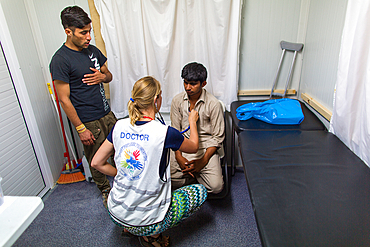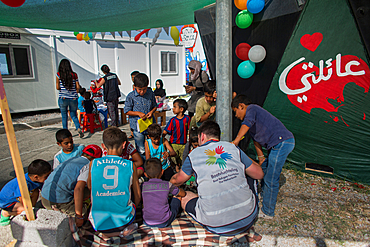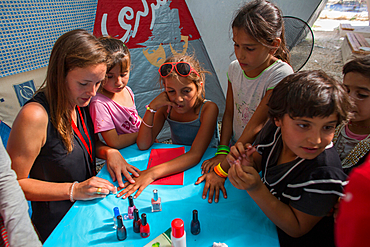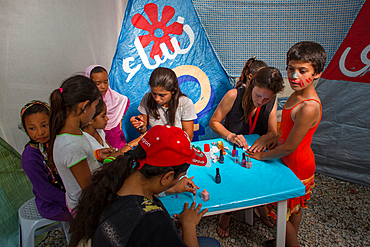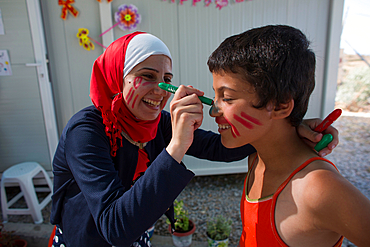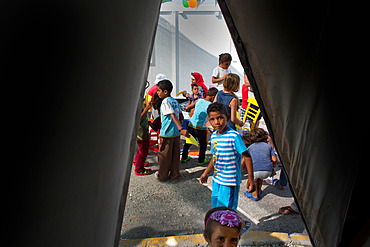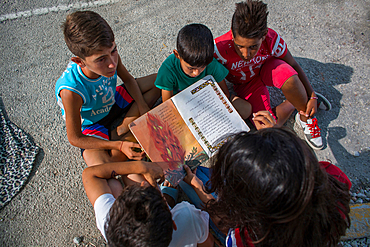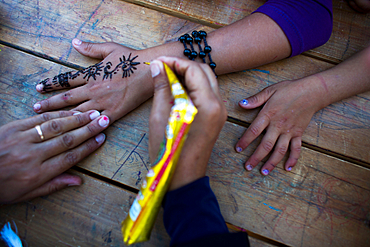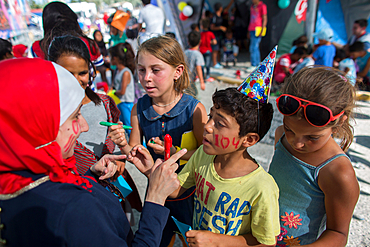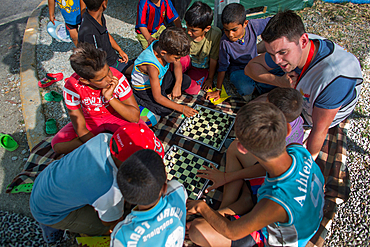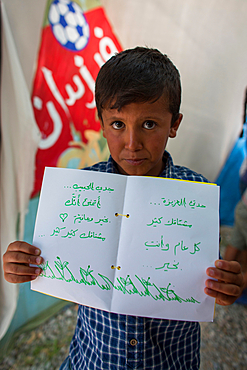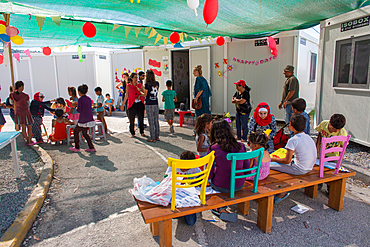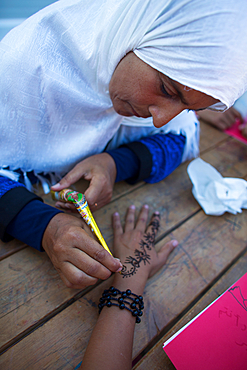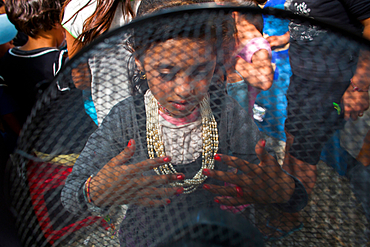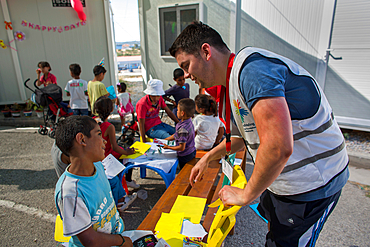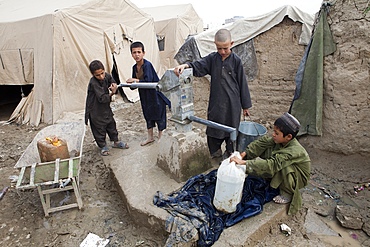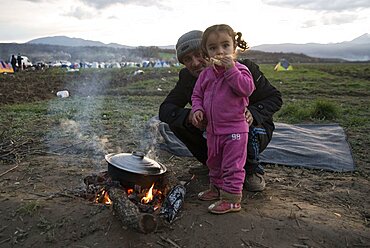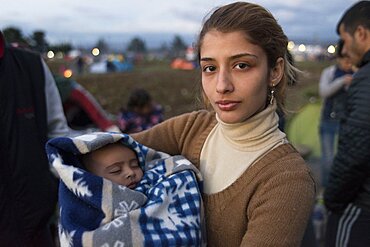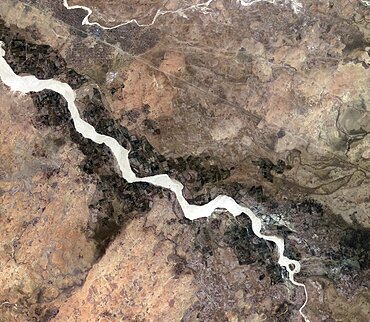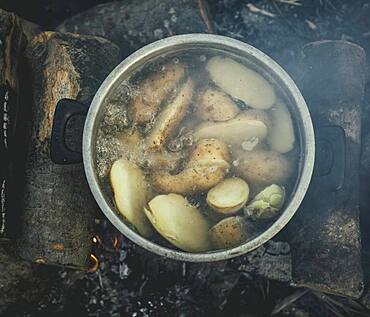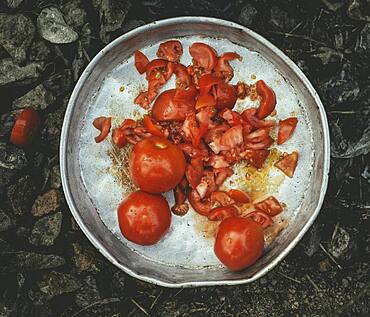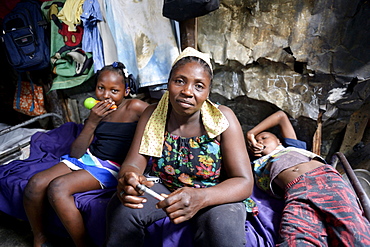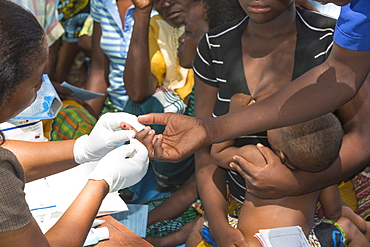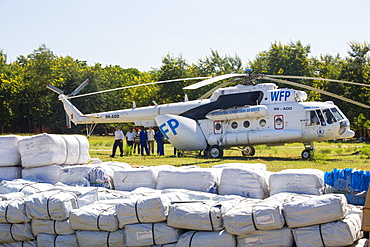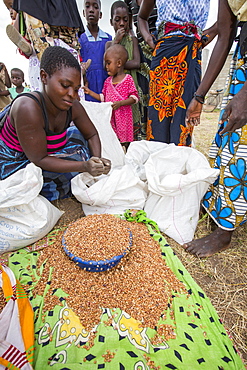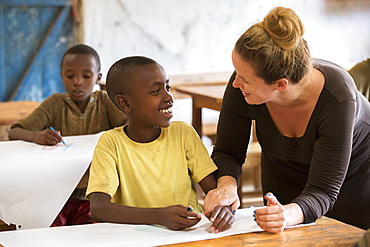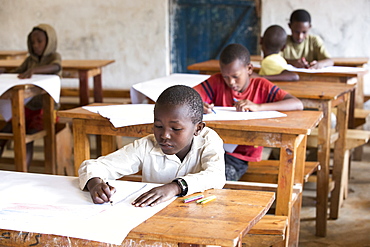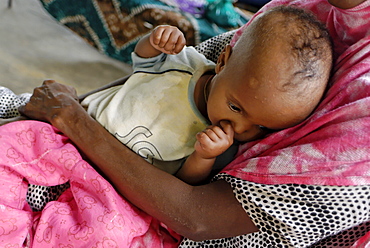Recent searches
Loading...
1350-6072 - Mobile clinic for Syrian refugees, run by Boat Refugee Foundation in Lesbos, Greece
1350-6061 - Iraqi, Afghani and Syrian refugees in Kara Tepe refugee camp in Lesbos, Greece
1350-6084 - Mobile clinic for Syrian refugees in Moria camp, run by Boat Refugee Foundation in Lesbos, Greece
1350-6074 - Children activities to celebrate in Kara Tebe refugee camp where 1000 Syrian refugees are housed.
1350-6097 - shades being distributed by Boat Refugee Foundation in Tara Tepe refugee camp in Greece
1350-6083 - shades being distributed by Boat Refugee Foundation in Tara Tepe refugee camp in Greece
1350-6096 - shades being distributed by Boat Refugee Foundation in Tara Tepe refugee camp in Greece
1350-6095 - Children activities to celebrate in Kara Tebe refugee camp where 1000 Syrian refugees are housed.
1350-6099 - Children activities to celebrate in Kara Tebe refugee camp where 1000 Syrian refugees are housed.
1350-6101 - Children activities to celebrate in Kara Tebe refugee camp where 1000 Syrian refugees are housed.
1350-6058 - Children activities to celebrate in Kara Tebe refugee camp where 1000 Syrian refugees are housed.
1350-6069 - Children activities to celebrate in Kara Tebe refugee camp where 1000 Syrian refugees are housed.
1350-6059 - Syrian, Iraqi and Afghan refugees celebrate Eid, the end of Ramadan in Kara Tebe refugee camp, Greece
1350-6081 - Mobile clinic for Syrian refugees, run by Boat Refugee Foundation in Lesbos, Greece
1350-6068 - Mobile clinic for Syrian refugees in Moria camp, run by Boat Refugee Foundation in Lesbos, Greece
1350-6079 - Children activities to celebrate in Kara Tebe refugee camp where 1000 Syrian refugees are housed.
1350-6065 - Children activities to celebrate in Kara Tebe refugee camp where 1000 Syrian refugees are housed.
1350-6062 - Children activities to celebrate in Kara Tebe refugee camp where 1000 Syrian refugees are housed.
1350-6075 - Children activities to celebrate in Kara Tebe refugee camp where 1000 Syrian refugees are housed.
1350-6060 - Children activities to celebrate in Kara Tebe refugee camp where 1000 Syrian refugees are housed.
1350-6067 - Iraqi, Afghani and Syrian refugees in Kara Tepe refugee camp in Lesbos, Greece
1350-6082 - Children activities to celebrate in Kara Tebe refugee camp where 1000 Syrian refugees are housed.
1350-6070 - Mobile clinic for Syrian refugees, run by Boat Refugee Foundation in Lesbos, Greece
1350-6071 - Syrian, Iraqi and Afghan refugees celebrate Eid, the end of Ramadan in Kara Tebe refugee camp, Greece
1350-6089 - Children activities to celebrate in Kara Tebe refugee camp where 1000 Syrian refugees are housed.
1350-6102 - Children activities to celebrate in Kara Tebe refugee camp where 1000 Syrian refugees are housed.
1350-6064 - Children activities to celebrate in Kara Tebe refugee camp where 1000 Syrian refugees are housed.
1350-6078 - Children activities to celebrate in Kara Tebe refugee camp where 1000 Syrian refugees are housed.
1350-5980 - Afghan refugee child fetching water from the well
1350-2901 - Temporary shelters within the refugee camps of the Danakil Depression, Ethiopia. Danakil Depression, Ethiopia
1350-2900 - A sign for the Goal Ethiopia Berahle Refugee Camp in Danakil Depression, Ethiopia
832-391686 - Soria Moria Sauna, Dalen, Telemark, Norway, Europe
832-389303 - Wild vegetables in a pot around the campfire of a family of refugees in the camp Idomeni, Greece, Europe
832-389298 - Coffee on campfire, prepared by refugees in the camp Idomeni, Greece, Europe
832-389322 - Girls, refugee camp in Sid, Serbia, Europe
832-389301 - Potato pot, meal of a family of refugees in the camp Idomeni, Greece, Europe
832-389302 - Tomatoes on a tray, meal of a family of refugees in the camp Idomeni, Greece, Europe
832-389300 - Pea soup on campfire, prepared by refugees in the camp Idomeni, Greece, Europe
832-389299 - Rice soup for refugees in the camp Idomeni, Greece, Europe
1184-3580 - Children in a refugee camp in Agadez, Niger, West Africa, Africa
832-382445 - Woman and children in a ramshackle hut, Camp Icare, camp for earthquake refugees, Fort National, Port-au-Prince, Haiti, Central America
832-382443 - Women braiding plaits, Camp Icare, camp for earthquake refugees, Fort National, Port-au-Prince, Haiti, Central America
832-381549 - Woman, 40 years, and two children, 8 and 10 years, in barracks, Camp Icare for earthquake refugees, 5 years after the 2010 earthquake, Fort National, Port-au-Prince, Haiti, Central America
832-379943 - Woman in front of tent, refugee camp Idomeni on the Greek-Macedonian border, Greece, Europe
911-10939 - In mid January 2015, a three day period of excessive rain brought unprecedented floods to the small poor African country of Malawi. It displaced nearly quarter of a million people, devastated 64,000 hectares of land, and killed several hundred people. This shot shows A Medicin Sans Frontieres clinic in Makhanga testing local people for malaria, many of whom proved positive for the disease, as a result of the drying up flood waters providing ideal breeding grounds for mosquitoes.
911-10948 - In mid January 2015, a three day period of excessive rain brought unprecedented floods to the small poor African country of Malawi. It displaced nearly quarter of a million people, devastated 64,000 hectares of land, and killed several hundred people. This shot shows A Russian Mi8 helicopter being used by the United Nations, World Food Program to deliver food aid to areas still cut off by the flooding around Makhanga and Bangula.
911-10902 - In mid January 2015, a three day period of excessive rain brought unprecedneted floods to the small poor African country of Malawi. It displaced nearly quarter of a million people, devastated 64,000 hectares of land, and killed several hundred people. This shot shows displaced people dividing up food aid in a refugee camp near Phalombe.
911-10940 - January 2015 saw a three day period of excessive rain which brought unprecedented floods to the small poor African country of Malawi. It displaced nearly quarter of a million people, devastated 64,000 hectares of land, and killed several hundred people. This shot shows A Medicin Sans Frontieres clinic in Makhanga testing local people, many of whom now have malaria, as a result of the drying up flood waters providing ideal breeding grounds for mosquitoes.
911-10949 - In mid January 2015, a three day period of excessive rain brought unprecedented floods to the small poor African country of Malawi. It displaced nearly quarter of a million people, devastated 64,000 hectares of land, and killed several hundred people. This shot shows A Russian Mi8 helicopter being used by the United Nations, World Food Program to deliver food aid to areas still cut off by the flooding, around Bangula and Mkhanga.
911-10941 - January 2015 saw a three day period of excessive rain which brought unprecedented floods to the small poor African country of Malawi. It displaced nearly quarter of a million people, devastated 64,000 hectares of land, and killed several hundred people. This shot shows A Medicin Sans Frontieres clinic in Makhanga providing Malaria treatment drugs to local people, many of whom now have malaria, as a result of the drying up flood waters providing ideal breeding grounds for mosquitoes.
911-10903 - In mid January 2015, a three day period of excessive rain brought unprecedented floods to the small poor African country of Malawi. It displaced nearly quarter of a million people, devastated 64,000 hectares of land, and killed several hundred people. This shot shows displaced children in Baani refugee camp near Phalombe.
911-10901 - In mid January 2015, a three day period of excessive rain brought unprecedneted floods to the small poor African country of Malawi. It displaced nearly quarter of a million people, devastated 64,000 hectares of alnd, and killed several hundred people. This shot shows a mother and child in Chiteskesa refugee camp, near Mulanje.
911-10904 - In mid January 2015, a three day period of excessive rain brought unprecedented floods to the small poor African country of Malawi. It displaced nearly quarter of a million people, devastated 64,000 hectares of land, and killed several hundred people. This shot shows displaced people in Baani refugee camp near Phalombe, preparing pumpkin flowers to eat.
911-10900 - In mid January 2015, a three day period of excessive rain brought unprecedneted floods to the small poor African country of Malawi. It displaced nearly quarter of a million people, devastated 64,000 hectares of alnd, and killed several hundred people. This shot shows a displaced women carrying water in the refugee camp of Chiteskesa refugee camp, near Mulanje.
911-10893 - In mid January 2015, a three day period of excessive rain brought unprecedneted floods to the small poor African country of Malawi. It displaced nearly quarter of a million people, devastated 64,000 hectares of alnd, and killed several hundred people. This shot shows a food being ferried across a river near Phalombe after the bridge was washed away.
911-10898 - In mid January 2015, a three day period of excessive rain brought unprecedented floods to the small poor African country of Malawi. It displaced nearly quarter of a million people, devastated 64,000 hectares of land, and killed several hundred people. This shot shows a specialist truck that takes water straight from the river and purifies it to drinking standards, which is then used in the many flood refugee camps in the Shire valley.
911-10905 - In mid January 2015, a three day period of excessive rain brought unprecedented floods to the small poor African country of Malawi. It displaced nearly quarter of a million people, devastated 64,000 hectares of land, and killed several hundred people. This shot shows solar powered lamps in a refugee camp near Chikwawa.
857-90396 - A visiting teacher interacts with a student at the Kiziba Refugee Camp in Kibuye, Rwanda.
857-90399 - A female student is photographed at the Kiziba Refugee Camp in Kibuye, Rwanda.
857-90394 - A student works on a project at the Kiziba Refugee Camp in Kibuye, Rwanda.
857-90398 - Students work on an assignment at the Kiziba Refugee Camp in Kibuye, Rwanda.
857-90393 - Students work on applications to a university at the Kiziba Refugee Camp in Kibuye, Rwanda.
857-90395 - Students work on a project at the Kiziba Refugee Camp in Kibuye, Rwanda.
857-90397 - Student work on a problem solving game at the Kiziba Refugee Camp in Kibuye, Rwanda.
832-59065 - A key, symbol of the Palestinian right of return, at the entrance of the Aida refugee camp in Bethlehem, Palestine, West Bank, Western Asia
1194-2412 - East timor. Camp for internally displaced people (idps) in the old hospital at baucau. Jacinta marques, and old woman and children at the camp
1195-12 - Kenya,dadaab refugees camp, somalian border gtz hospital ,the camps were set up around the town of dadaab beginning in 1991 when civil wars erupted on a grand scale in somalia (16 rival factions were involved). The wars, along with a prolonged drought, forced more than 900,000 somalis to flee to neighboring countries. Approximately 400,000 of them, many of whom were in a serious state of exhaustion and starvation, took refuge in kenya. Since then, a majority have returned to their country. However, some 131,000 somalis remain in kenya, and 110,000 are in dadaab, along with some sudanese, ugandans, and about 3,000 ethiopians women waiting the receive care from gtz ngo at the local hospital
1194-2406 - East timor. Camp for internally displaced people (idps) at the don bosco center in dili. Mother and child
1195-9 - Kenya,dadaab refugees camp, somalian border gtz hospital ,the camps were set up around the town of dadaab beginning in 1991 when civil wars erupted on a grand scale in somalia (16 rival factions were involved). The wars, along with a prolonged drought, forced more than 900,000 somalis to flee to neighboring countries. Approximately 400,000 of them, many of whom were in a serious state of exhaustion and starvation, took refuge in kenya. Since then, a majority have returned to their country. However, some 131,000 somalis remain in kenya, and 110,000 are in dadaab, along with some sudanese, ugandans, and about 3,000 ethiopians women waiting the receive care from gtz ngo at the local hospital
1195-1 - Kenya,dadaab refugees camp, somalian border gtz hospital ,the camps were set up around the town of dadaab beginning in 1991 when civil wars erupted on a grand scale in somalia (16 rival factions were involved). The wars, along with a prolonged drought, forced more than 900,000 somalis to flee to neighboring countries. Approximately 400,000 of them, many of whom were in a serious state of exhaustion and starvation, took refuge in kenya. Since then, a majority have returned to their country. However, some 131,000 somalis remain in kenya, and 110,000 are in dadaab, along with some sudanese, ugandans, and about 3,000 ethiopians women waiting the receive care from gtz ngo at the local hospital . wounds due to boiling water for tea . lots of kids get burned by open flames fires into the camp as they play around without parents control
1195-11 - Kenya,dadaab refugees camp, somalian border gtz hospital ,the camps were set up around the town of dadaab beginning in 1991 when civil wars erupted on a grand scale in somalia (16 rival factions were involved). The wars, along with a prolonged drought, forced more than 900,000 somalis to flee to neighboring countries. Approximately 400,000 of them, many of whom were in a serious state of exhaustion and starvation, took refuge in kenya. Since then, a majority have returned to their country. However, some 131,000 somalis remain in kenya, and 110,000 are in dadaab, along with some sudanese, ugandans, and about 3,000 ethiopians women waiting the receive care from gtz ngo at the local hospital
1195-10 - Kenya,dadaab refugees camp, somalian border gtz hospital ,the camps were set up around the town of dadaab beginning in 1991 when civil wars erupted on a grand scale in somalia (16 rival factions were involved). The wars, along with a prolonged drought, forced more than 900,000 somalis to flee to neighboring countries. Approximately 400,000 of them, many of whom were in a serious state of exhaustion and starvation, took refuge in kenya. Since then, a majority have returned to their country. However, some 131,000 somalis remain in kenya, and 110,000 are in dadaab, along with some sudanese, ugandans, and about 3,000 ethiopians women waiting the receive care from gtz ngo at the local hospital
1195-6 - Kenya,dadaab refugees camp, somalian border gtz hospital ,the camps were set up around the town of dadaab beginning in 1991 when civil wars erupted on a grand scale in somalia (16 rival factions were involved). The wars, along with a prolonged drought, forced more than 900,000 somalis to flee to neighboring countries. Approximately 400,000 of them, many of whom were in a serious state of exhaustion and starvation, took refuge in kenya. Since then, a majority have returned to their country. However, some 131,000 somalis remain in kenya, and 110,000 are in dadaab, along with some sudanese, ugandans, and about 3,000 ethiopians women waiting the receive care from gtz ngo at the local hospital
1195-2 - Kenya,dadaab refugees camp, somalian border gtz hospital ,the camps were set up around the town of dadaab beginning in 1991 when civil wars erupted on a grand scale in somalia (16 rival factions were involved). The wars, along with a prolonged drought, forced more than 900,000 somalis to flee to neighboring countries. Approximately 400,000 of them, many of whom were in a serious state of exhaustion and starvation, took refuge in kenya. Since then, a majority have returned to their country. However, some 131,000 somalis remain in kenya, and 110,000 are in dadaab, along with some sudanese, ugandans, and about 3,000 ethiopians women waiting the receive care from gtz ngo at the local hospital
1195-8 - Kenya,dadaab refugees camp, somalian border gtz hospital ,the camps were set up around the town of dadaab beginning in 1991 when civil wars erupted on a grand scale in somalia (16 rival factions were involved). The wars, along with a prolonged drought, forced more than 900,000 somalis to flee to neighboring countries. Approximately 400,000 of them, many of whom were in a serious state of exhaustion and starvation, took refuge in kenya. Since then, a majority have returned to their country. However, some 131,000 somalis remain in kenya, and 110,000 are in dadaab, along with some sudanese, ugandans, and about 3,000 ethiopians women waiting the receive care from gtz ngo at the local hospital
1195-3 - Kenya,dadaab refugees camp, somalian border gtz hospital ,the camps were set up around the town of dadaab beginning in 1991 when civil wars erupted on a grand scale in somalia (16 rival factions were involved). The wars, along with a prolonged drought, forced more than 900,000 somalis to flee to neighboring countries. Approximately 400,000 of them, many of whom were in a serious state of exhaustion and starvation, took refuge in kenya. Since then, a majority have returned to their country. However, some 131,000 somalis remain in kenya, and 110,000 are in dadaab, along with some sudanese, ugandans, and about 3,000 ethiopians women waiting the receive care from gtz ngo at the local hospital
